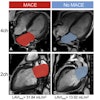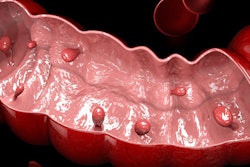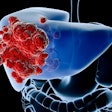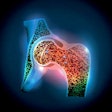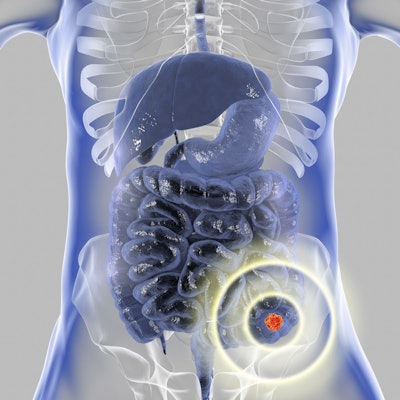
Body composition analysis on CT reveals that colon cancer patients with high visceral fat and low muscle mass are more likely to have worse outcomes, according to research published August 30 in JAMA Network Open. Inflammation also plays a key role.
Findings of high visceral fat and low muscle mass were both associated with a greater likelihood of five-year cancer recurrence, while high visceral fat was also associated with disease-specific mortality, reported a group led by Dr. Christina Fleming of Cork University Hospital in Ireland. Further analysis showed that inflammation appeared to be a key factor.
"Upregulation of proinflammatory cytokines, acute phase proteins, and [vascular endothelial growth factor] and downregulation of protective anti-inflammatory mediators was pronounced in patients with low [skeletal muscle area] and high visceral to total fat ratio who experienced poor clinical or cancer outcomes," the authors wrote. "Therefore, these findings suggest that the negative impact of sarcopenia and visceral fat on cancer outcomes may be driven by systemic inflammation."
To identify any underlying inflammatory pathways and body composition profiles associated with worse five-year colon cancer outcomes, the researchers compared body composition measurements and inflammatory mediator levels in 28 patients with nonmetastatic colon cancer.
Of these patients, nine (32.1%) had a postoperative complication within the first 30 days after surgery. Four patients experienced recurrence at a median interval of 22 months and three patients died as a result of the disease, with a median interval from surgery to death of 27 months.
Using the Horos DICOM image viewer (Horos Project), the researchers acquired anthropometric measurements from preoperative CT scans performed four to six weeks before surgery on a 64-slice multidetector CT scanner from GE Healthcare.
They found that low skeletal muscle area and a high ratio of visceral to total fat were associated with an increased risk of postoperative infections and five-year recurrence. What's more, the high visceral-to-total fat ratio was also associated with five-year disease-specific mortality.
| Association of CT body composition measures with outcomes in colon cancer patients | ||
| Low skeletal muscle area | High visceral-to-total fat ratio | |
| Infective complications within 30 days | Odds ratio (OR) = 2.13 | OR = 3.2 |
| Cancer recurrence within 5 years | OR = 2.30 | OR = 5.78 |
| Disease-specific mortality within 5 years | Hazard ratio (HR) = 3.22* | HR = 5.92 |
After reviewing inflammatory mediators in all patients, the researchers found that the less-favorable colon cancer outcomes associated with low skeletal muscle area and high visceral-to-total fat ratio were also associated with increased expression of proinflammatory cytokines and vascular endothelial growth factor, as well as lower levels of protective inhibitory cytokines.
Interestingly, subcutaneous fat levels correlated with levels of interleukin-2 and interleukin-10 -- cytokines thought to possess predominantly anti-inflammatory properties, according to the authors.
"Thus higher subcutaneous fat area may have a protective association with the deleterious inflammatory outcomes associated with visceral fat," the authors wrote. "This phenomenon may be why [body mass index] is not a reliable prognostic marker in cancer and cancer surgery, as it does not reflect differential fat distribution or muscle mass distribution."



